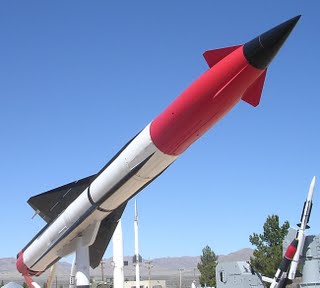What a Revamped U.S. Missile Shield Might Look Like

Details are now emerging on the Obama administration’s plans to revamp missile defense to better counter the emerging Iranian missile threat.
President Barack Obama yesterday announced that he would scrap George W. Bush’s plan to park missile-defense interceptors in Poland and place an X-band radar in the Czech Republic. Speaking yesterday to reporters, Secretary of Defense Robert Gates offered the new rationale.
“Over the last few years, we have made great strides with missile defense, particularly in our ability to counter short-and-medium-range missiles,” he said. “We now have proven capabilities to intercept these ballistic missiles with land-and-sea-based interceptors supported by much-improved sensors. These capabilities offer a variety of options to detect, track and shoot down enemy missiles. This allows us to deploy a distributive sensor network rather than a single fixed site, like the kind slated for the Czech Republic, enabling greater survivability and adaptability.”
In addition, Gates noted the Navy’s considerable test success with the missile-shooting Standard Missile-3 (pictured here), which has seen eight successful flight tests since 2007. Sea-based interceptors, he said, offer a much more flexible option than a fixed site.
Intriguingly, the new plan might include deploying an X-band radar to the Caucasus — the region sandwiched between the Black Sea and the Caspian Sea — to keep an eye out for missile launches from Iran. Vice Chairman of the Joint Chiefs of Staff Gen. James Cartwright said stationing a radar in the Caucasus might reassure Russia, which was vehemently opposed to the Bush administration’s plan to place assets in Eastern Europe.
“The X-band radar is a single directional,” he said. “In other words, when you put it down, it points in a single direction. And it will be very clear that it is pointing south towards Iran.”
It’s easy to speculate about which countries in the region could potentially host an X-band radar. The United States has close military ties with Georgia. And neighboring Azerbaijan, which shares a border with Iran, has received U.S. funding for the construction of radar installations.
The idea of stationing an X-band radar in the Caucasus, however, is not new. Back in 2006, the Missile Defense Agency (MDA) published a fact sheet that said mobile sensors for ballistic missile defense might be placed in an unnamed country in the Caucasus. The agency subsequently scrubbed the fact sheet to remove any mention of possible locales, although MDA spokesman Rick Lehner told me at the time that the region would be a “good location for a small X-band radar to provide tracking and discrimination of missiles launched from Iran.”
If deployed, that radar would probably be an AN/TPY-2, the transportable X-band radar developed for the Army’s Terminal High Altitude Area Defense system. Back in 2006, Lt. Gen. Larry Dodgen, the head of the Army’s Space and Missile Defense Command, said the service was looking at ways to create an “instant” missile-defense capability by setting up THAAD radars onshore to provide Navy missile-defense ships with extended sensor coverage.

